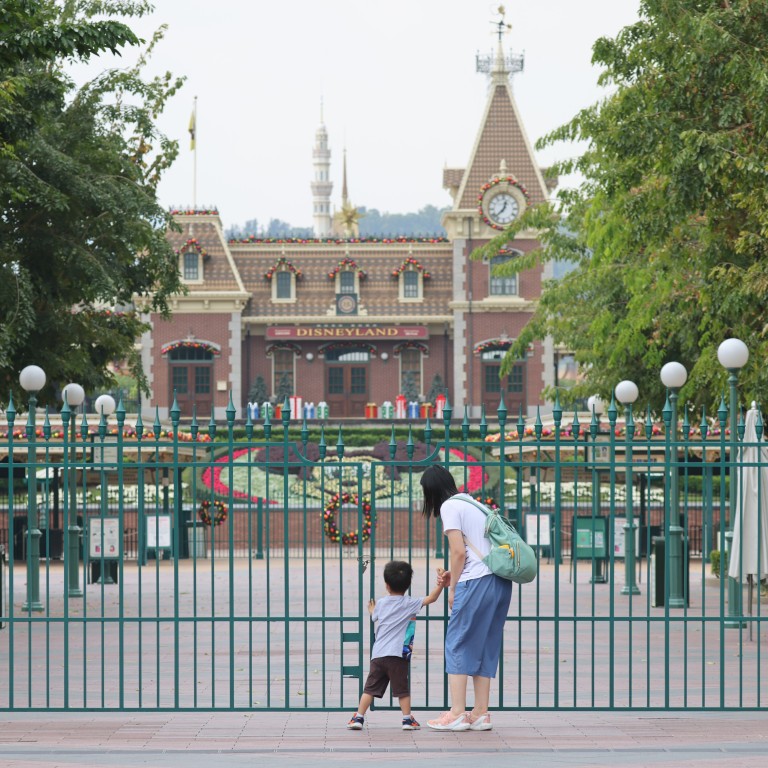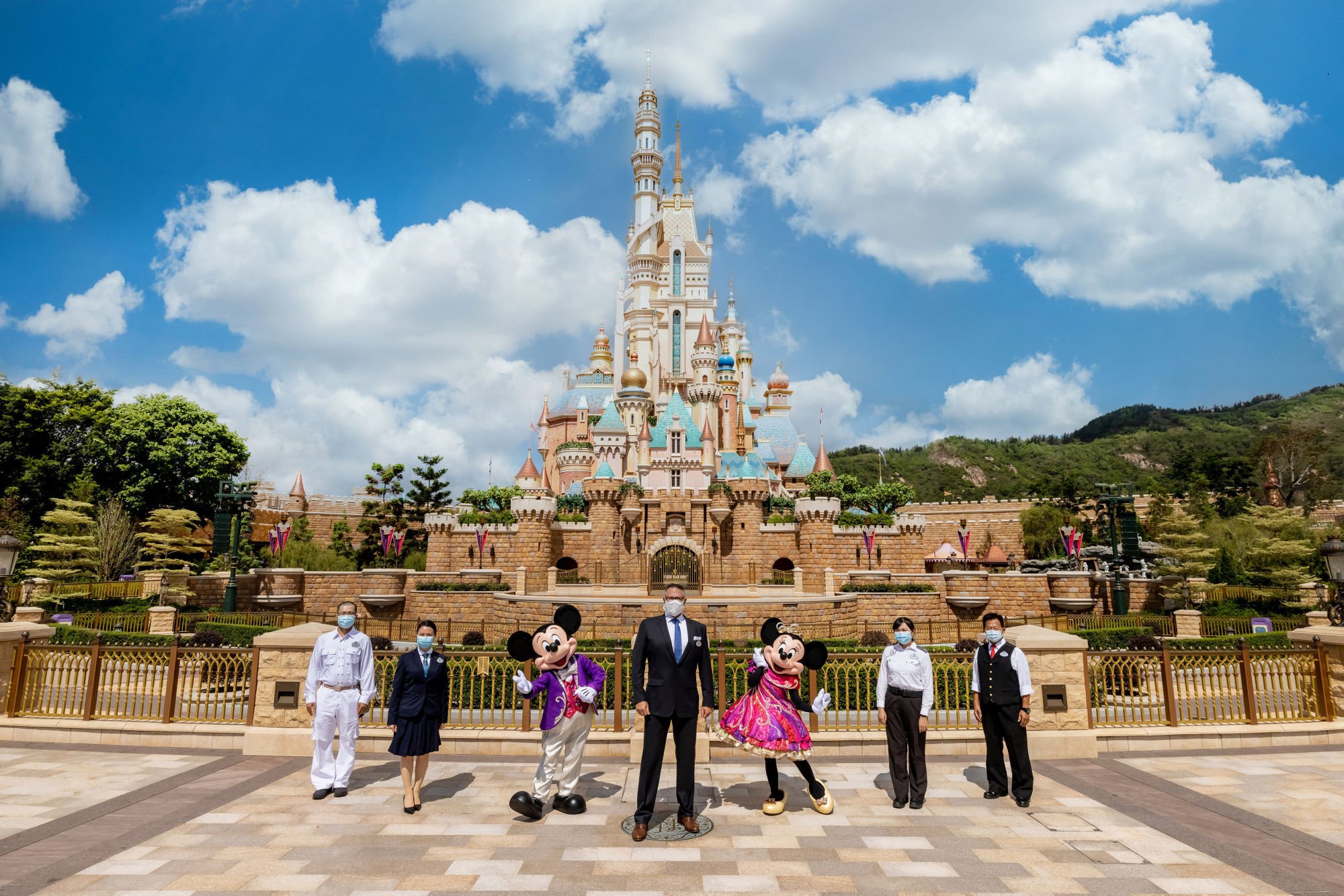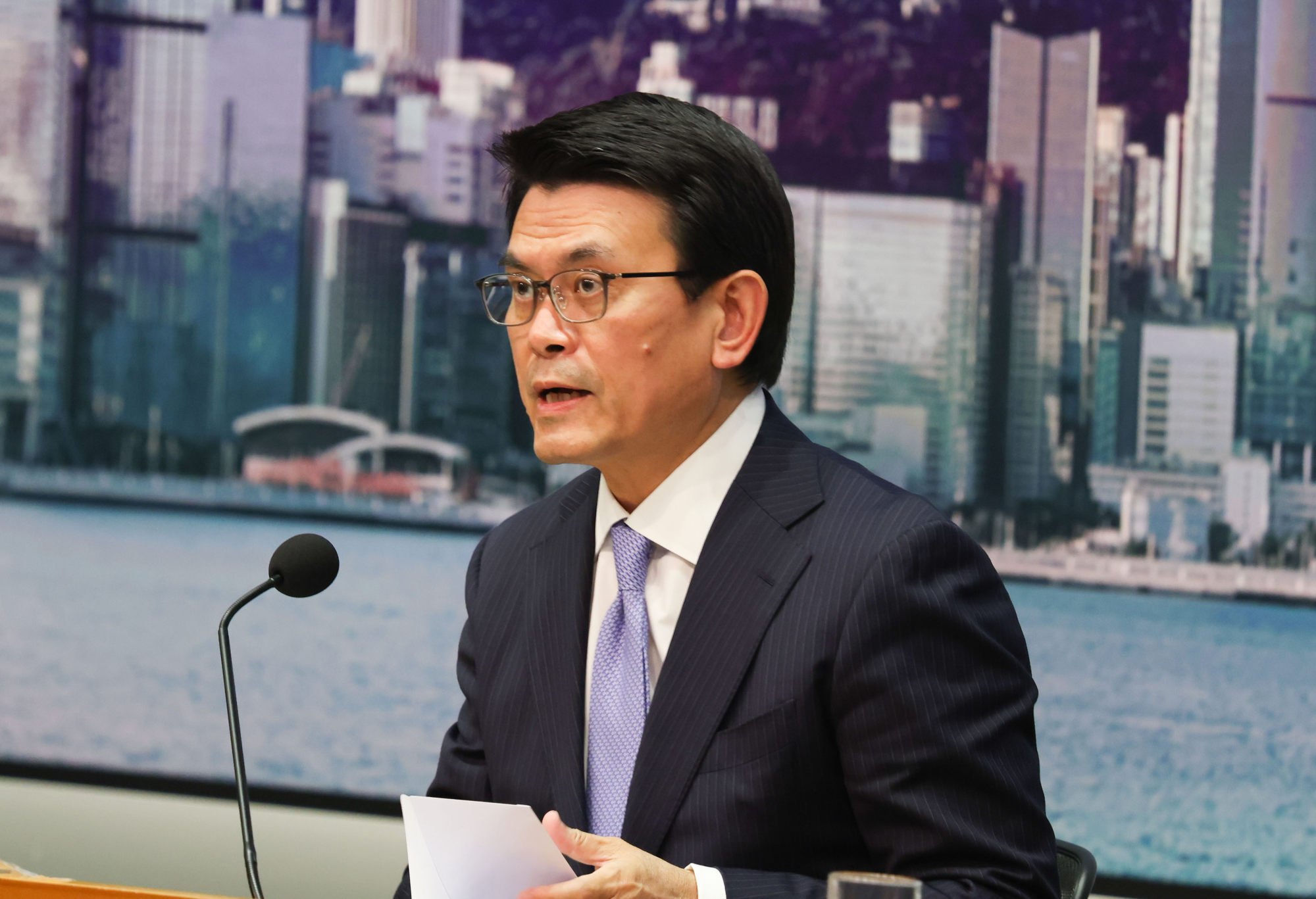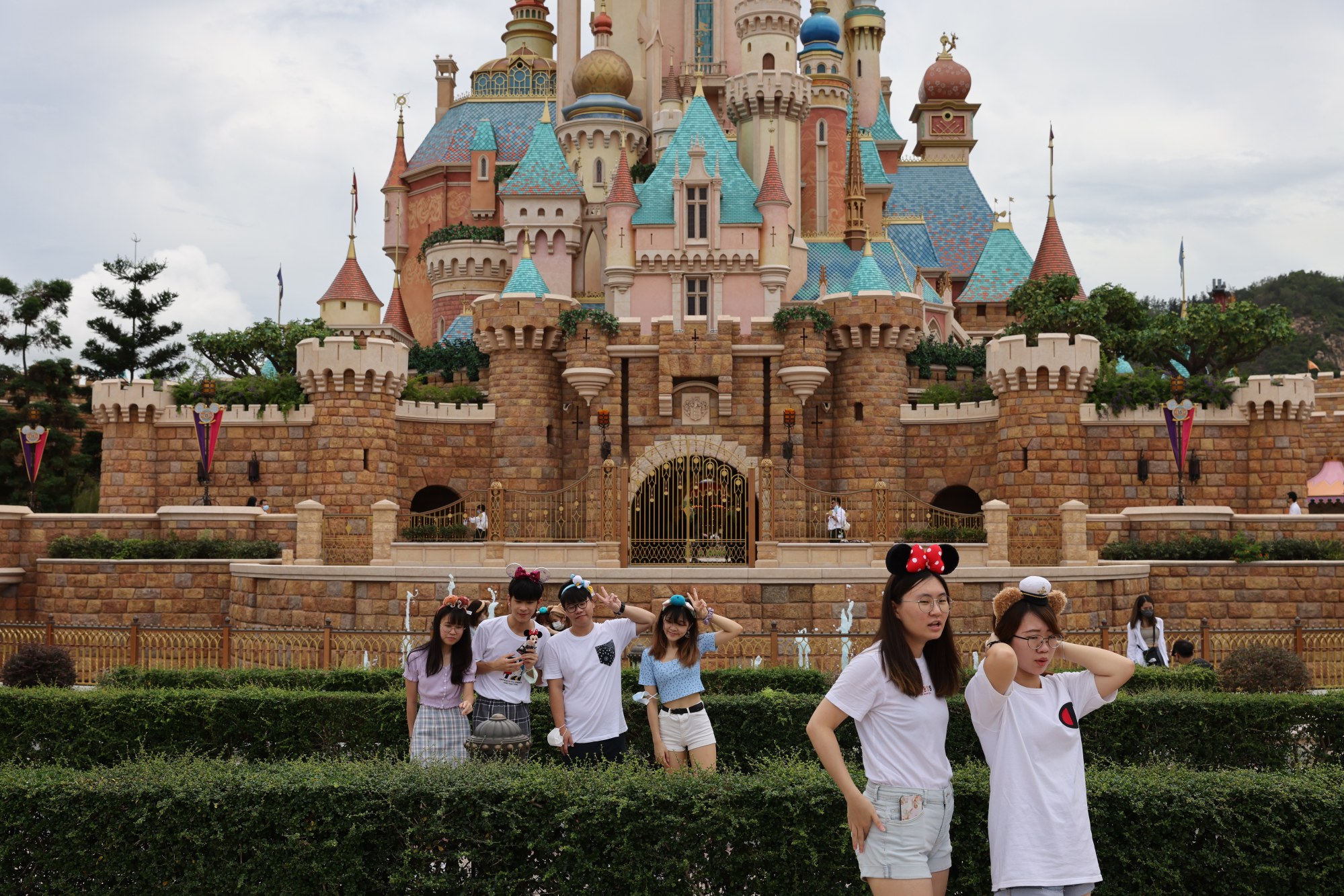
Loss-making Hong Kong Disneyland aims to cut costs in ‘different ways’, hopes to reopen soon
- Lawmakers press government, the resort’s controlling shareholder, to lower its exposure to protracted losses
- Managing director Michael Moriarty says he hopes park can reopen from April 21, the date the government has set to begin relaxing social-distancing curbs
The park has been closed since January 7 after the government tightened social-distancing measures to tackle a raging fifth wave of coronavirus infections.
At a Legislative Council panel meeting on Monday, Hong Kong Disneyland Resort managing director Michael Moriarty said he hoped the park could reopen from April 21, the date the government has set to begin relaxing the virus-related curbs in three phases provided there are no signs of a rebound in cases.

The Lantau Island attraction has made a loss over the past seven financial years.
“I am requesting if the government and Disney can rediscuss royalty fees. For example, could Walt Disney charge half of the agreed amount when Disneyland suffers a deficit, and then get the full amount when the park is in profit again?” Tien, of the Roundtable group, asked.
Hong Kong Disneyland records HK$2.4 billion loss amid Covid-19 pandemic
Tien also expressed worries about the park’s depreciation and amortisation. He noted amortisation in the past few years had been below HK$1 billion but had risen to almost HK$1.4 billion in 2021 and was expected to climb further due to investment in new facilities.
Disney parks outside the United States are charged about 5 to 10 per cent of revenues for royalties, for access and use of the US entertainment giant’s intellectual property for resort development and operations.
Secretary for Commerce and Economic Development Edward Yau Tang-wah told the meeting the government had previously held discussions with Disney and made changes to contract clauses, such as adjusting management fees.

But adjusting royalty payments was “not the easiest” as intellectual property assets, such as cartoon characters and storylines, were important to the organisation.
“A reduction in royalty payment cannot be achieved unilaterally. The government has not given up on operational issues, however, and will seek different ways to reduce costs with Disney as a shareholder,” Yau added.
Hong Kong Disneyland posted a loss of HK$2.4 billion (US$306.7 million) for the last financial year amid a series of pandemic-related closures and a near-complete absence of tourists.
The loss for the financial year ending September 30, 2021 was 12 per cent lower than the HK$2.66 billion shortfall recorded for the preceding 12 months.
Despite the challenges, Disneyland’s total attendance rebounded 64 per cent year on year to 2.8 million, driven mainly by local residents. Revenue for the year grew 19 per cent to HK$1.7 billion. The loss before interest, taxes, depreciation and amortisation narrowed 34 per cent to HK$970 million.
Tien also asked if the government had any alternatives if Disney stood firm on royalty fees, with Yau replying that the park could increase expenses and cut costs. He noted that local income last year reached a new high, while costs were also lower.
Hong Kong Disneyland fans angry at parking benefits loss, won’t let it go
The resort is 52 per cent owned by the government, with the rest held by the Walt Disney Company via a joint venture called Hong Kong International Theme Parks.
Moriarty, the resort’s managing director, also addressed lawmakers’ questions on how to attract mainland Chinese tourists to the park.
He said that because of the pandemic the park had not been able to see new guests arriving via transport facilities such as the high speed rail and the Hong Kong-Zhuhai-Macau Bridge which made Hong Kong more accessible to mainlanders.
With new attractions being developed, Moriarty also said the park had “more to offer” as many inbound travellers have not had the chance to check them out yet.
At the same Legco panel meeting, meanwhile, the Hong Kong Tourism Board said it planned to spend HK$100 million on promoting the city on the mainland.

Board executive director Dane Cheng Ting-yat noted that half of 13,500 mainlanders it surveyed last December would choose to visit Hong Kong when the border reopened.
He also stressed that these publicity measures were not to restart tourism, but to lay a solid foundation to maintain Hong Kong’s image as a tourist city.
The board has received a total budget of HK$1.35 billion this year, to promote cross-border travel and celebrate the 25th anniversary of the city’s handover from British to Chinese rule.
Hong Kong Disneyland records worst-ever HK$2.66 billion loss amid pandemic
Over half of the board’s total financial resources this year would be used to promote tourism, including local consumption, he said, adding new opportunities would also be created to boost cross-border travel.
The tourism body has also predicted significant growth in the number of arrivals during the second half of 2022, potentially reaching 9.6 million inbound travellers.
The predicted uptick would be a marked increase from last year’s 91,398 arrivals, with the board reporting the figure from 2021 represented a 97.4 per cent drop from the 3.57 million inbound travellers recorded in 2020.
The number of arrivals from the mainland also dropped significantly last year, decreasing 97.6 per cent from 2.76 million to 65,694.

